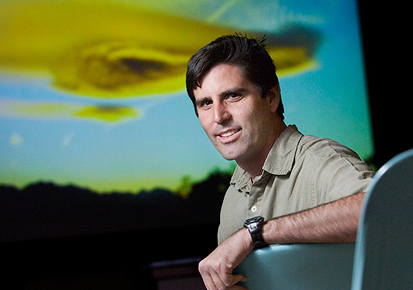A Plan for Clean, Sustainable Energy Worldwide in 20-40 Years
| Tweet |
By Mark Z. Jacobson, PhD, Director of the Atmosphere/Energy Program and Professor of Civil and Environmental Engineering at Stanford University
Global warming, air pollution, and energy insecurity are three of the most significant problems facing the world today. My upcoming talk at Stanford Blood Center’s Café Scientifique on 3/29/12 discusses a plan to solve the problems by powering 100% of the world’s energy for all purposes, including electricity, transportation, industry, and heating/cooling, with wind, water, and sunlight (WWS) within 20-40 years.
The plan reviews and ranks major proposed energy solutions to these problems while considering impacts of the solutions, such as on water supply, land use, resource availability, reliability, wildlife, and catastrophic risk. It then evaluates a scenario for powering the world with WWS technologies while considering materials, transmission infrastructure, costs, and policies.
Due to the efficiency of electricity, such a conversion reduces world end-use power demand by ~32% and U.S. power demand by ~37%. The solution requires only ~0.4% of the world’s land for footprint and ~0.6% for spacing, only token amounts of water, is not limited by materials, and is economically competitive with conventional fuels and less expensive when externality costs are accounted for. Multiple methods exist of ensuring reliability of electric power supply.
The plan calls for all new energy to be WWS by 2030 and remaining non-WWS infrastructure to be eliminated by 2050. Barriers to the plan are political and social, not technical or economic.
My study (see Energy Policy, 2011 parts 1 & 2 found here) concludes that powering the world for all purposes with WWS electric power technologies and a conversion from combustion to electricity and electrolytically-produced hydrogen is the cleanest and safest method of solving these problems.
Relevant papers can be found here.

